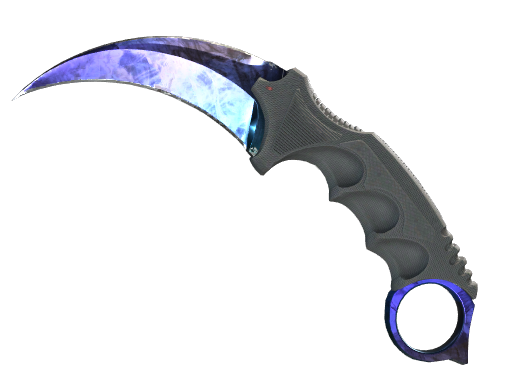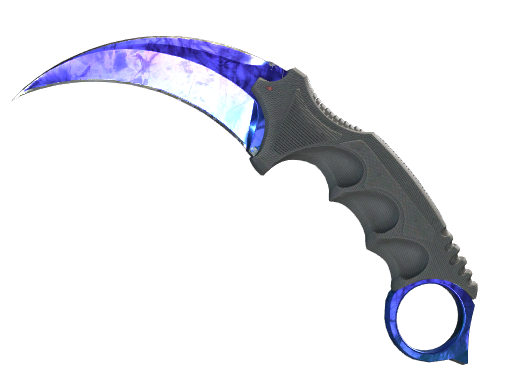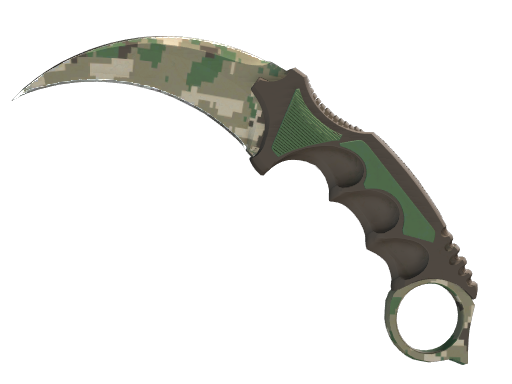The karambit, with its distinctive curved blade, has transcended its traditional Southeast Asian origins to become one of the most iconic symbols within the gaming community, particularly among CS2 enthusiasts. The allure of karambit skins in the virtual world mirrors the weapon’s historical prestige, transforming it into a coveted item for players worldwide. This evolution reflects not just a trend but a deep-seated fascination with the blend of cultural heritage and virtual achievement. As a pivotal aspect of in-game identity and status, the quest for rare karambit skins drives a dynamic market and community engagement, underscoring its importance beyond mere aesthetics.
This article provides a comprehensive guide to karambit skins, beginning with their evolution and surge in popularity among gaming communities, especially in CS2 contexts. It delves into the top 5 most sought-after karambit skins, highlighting their unique features and the reasons behind their demand. Understanding how these skins influence the in-game economy reveals the complexities of virtual trading and collection strategies. Furthermore, the piece offers practical tips for avid collectors and traders, aiming to navigate the intricacies of acquiring and dealing karambit skins. Lastly, a glimpse into the future of these virtual items suggests the ongoing evolution of their role and significance within gaming culture.
The Evolution and Popularity of Karambit Skins in Gaming
The karambit knife, originally from Indonesia and Malaysia, was not initially a weapon but a tool for simple farming tasks. Over centuries, it evolved into a symbol of status and style, especially within the gaming community. In games like Counter-Strike 2 (CS2), the karambit’s distinctive curved blade, reminiscent of a tiger’s claw, has become more than just a virtual item; it represents a player’s wealth and achievements.
Origins of the Karambit
Historical sources trace the karambit back to the 11th century AD in the islands of Indonesia, where it was primarily a utility knife. Its transformation from a practical tool to a weapon in martial arts marked its first evolution, long before it captivated gamers worldwide.
Karambit Skins: A Gamer’s Status Symbol
In the virtual arenas of CS2, the karambit skin is not just a tool but a luxury. Rare skins like the Sapphire or Gamma Doppler Emerald are highly coveted, reflecting not only a player’s in-game prowess but also their social standing within the community. These skins, often worth thousands of dollars, are pursued by players for their aesthetic appeal and rarity.
The Impact of Karambit Skins on the Gaming Community
The allure of karambit skins has significantly shaped the in-game economy, creating a bustling market where players trade these skins at high values. This economy highlights the skins’ role beyond mere decoration, influencing the dynamics of trading and collection strategies among players.
Top 5 Most Sought-After Karambit Skins
Karambit | Fade
Introduced in the “The Arms Deal” update on August 14, 2013, the Karambit | Fade is renowned for its vibrant blade, coated in a spectrum of purple, pink, and yellow. The rarity and aesthetic appeal, especially in its “100% Fade” version, make it a prized possession, available only in Factory New and Minimal Wear conditions due to its restricted float value range of 0.00 to 0.08.
Karambit | Tiger Tooth
First seen on January 8, 2015, as part of the Chroma 3 Case, the Karambit | Tiger Tooth dazzles with its anodized orange and tiger stripe pattern. Its Covert rarity and a price range of $1,038.67 to $1,103.00 reflect its status among enthusiasts, further underscored by its popularity and availability in pristine condition.
Karambit | Lore
Released alongside the “Gamma Exposure” update on June 15, 2016, the Karambit | Lore features a gold-toned blade with intricate medieval patterns. This skin, available across all Gamma cases, is admired for its detailed craftsmanship and is available in a wide range of conditions, from Factory New to Battle-Scarred.
Karambit | Crimson Web
Known for its striking red blade with a black web pattern, the Karambit | Crimson Web debuted on August 14, 2013. This skin commands a premium, with prices ranging significantly based on condition, making it a standout choice for collectors.
Karambit | Doppler
The Karambit | Doppler, introduced in early 2015 within the Chroma Case, is celebrated for its smoky metallic paint and the variety of phases that affect its color scheme, from Ruby to Black Pearl. Its rarity and the dynamic appearance make it a favorite among players, enhancing its demand and value in the market.
How Karambit Skins Influence the In-Game Economy
Karambit skins significantly impact the in-game economy of CS2, influencing everything from player investment to market dynamics.
Price Dynamics of Karambit Skins
The value of Karambit skins fluctuates based on several factors, including rarity, condition, and market demand. For instance, skins like the Karambit | Case Hardened are coveted due to unique color patterns, especially those with a higher percentage of blue, known as “Blue Gem.” The price range can vary dramatically from one skin to another based on these aesthetic characteristics, affecting how players invest in and value their collections.
The Role of Rarity and Condition
The rarity and condition of a Karambit skin can greatly affect its market value. Rare skins like the Karambit | Lore and those in pristine condition fetch higher prices. The market adjusts dynamically as new skins are introduced and older skins become rarer, creating a constantly evolving economic environment within the game.
Tips for Collecting and Trading Karambit Skins
Identifying Value in Karambit Skins
When assessing Karambit skins, understanding the impact of pattern rarity and condition is crucial. For instance, the Karambit Doppler skin is available in four distinct phases, each with unique color schemes that can significantly affect its market value. Collectors often seek out rare patterns like the Sapphire or Ruby phases, which are prized for their aesthetic appeal and rarity.
Building a Karambit Skin Collection
Building a comprehensive collection involves more than just acquiring skins; it’s about curating pieces that have both personal appeal and potential for appreciation. Consider the Karambit Case Hardened, which can feature a ‘Blue Gem’ pattern highly coveted due to its vibrant blue hues. Collecting such unique patterns can offer both satisfaction and a potential return on investment.
Conclusion
Through the exploration of karambit skins in CS2, we’ve journeyed from the weapon’s historical roots to its towering status in the digital age, attributing not just to a player’s identity but also to a vibrant in-game economy. This guide has outlined the allure of karambit skins, underscoring their significance beyond the battlefield by delving into the most coveted designs and offering strategies for collectors and traders. The discussion highlighted the intersection of culture, economy, and technology, revealing how these aspects fuse to shape the game’s market dynamics and community engagement.
As we look towards the future, the evolving landscape of karambit skins promises to continue influencing the gaming community profoundly. The anticipation of new design innovations and their economic implications suggests an ever-expanding universe of collection and trade. Thus, our journey through the world of karambit skins does not conclude here but rather beckons players to dive deeper, exploring the rich tapestry that these skins contribute to gaming culture and beyond. This exploration reflects not only on the game’s past and present but sets the stage for its exciting, evolving future.


















